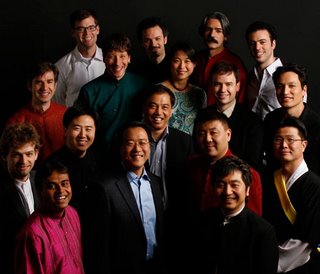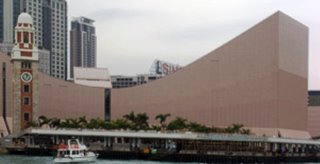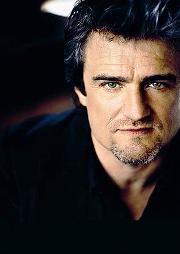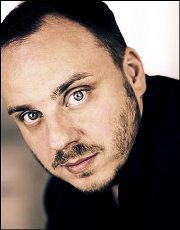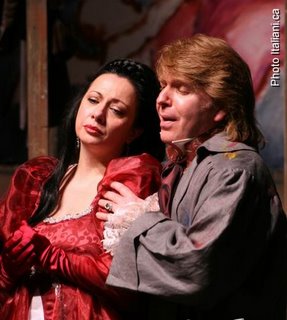By Paul E. Robinson Classical Travels
THIS WEEK IN HONG KONG
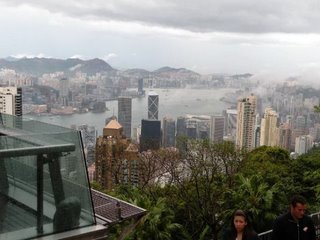
It was in 1966 that Marita and I first arrived in Hong Kong. The trip out from Canada was our honeymoon and a post at the University of Hong Kong (HKU) was my first job. We were young and adventurous, looking for an exotic life – and we found it. We spent three happy years here and then left for other challenges. Yes, we are back! This week, 40 years after we left it, we returned to Hong Kong and to HKU where I gave a lecture on Leopold Stokowski.
Forty years later, what has changed, and what if anything, has survived of the world Marita and I knew in the mid 1960s?
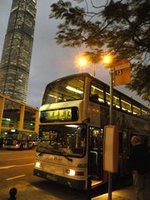 On a superficial level Hong Kong today is a modern miracle, a far cry from the colonial outpost caught in a time warp that it appeared to be in 1966. In those days, the planes landed at Kai Tak Airport, little more than a runway stuck into the middle of the harbor off Kowloon. It was a precarious place to land and some flights inevitably ended up in the water. Today, planes fly in and out of a much safer airport on Lantau Island. Arriving passengers are whisked into the city via a wonderfully smooth and quiet express train, or by taxi over a suspension bridge that is an engineering marvel. In Hong Kong itself, 7 million people are transported to and fro by an incredible combination of escalators, interconnecting walkways, and a super-efficient network of buses.
On a superficial level Hong Kong today is a modern miracle, a far cry from the colonial outpost caught in a time warp that it appeared to be in 1966. In those days, the planes landed at Kai Tak Airport, little more than a runway stuck into the middle of the harbor off Kowloon. It was a precarious place to land and some flights inevitably ended up in the water. Today, planes fly in and out of a much safer airport on Lantau Island. Arriving passengers are whisked into the city via a wonderfully smooth and quiet express train, or by taxi over a suspension bridge that is an engineering marvel. In Hong Kong itself, 7 million people are transported to and fro by an incredible combination of escalators, interconnecting walkways, and a super-efficient network of buses.
Life on Three Levels and Gone are the Lawns
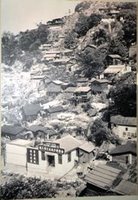 Most of Hong Kong island is a mountain and most people live somewhere on the side of that mountain (Central, Mid-levels, or the “Peak”). This means that cars and other vehicles are always going up or downhill, or around a switchback. If one is on foot, one is always either climbing up or down endless staircases, or stopping to catch a breath. In our 1960s Hong Kong, there was still a community of shacks on the hillside (right). If shacks still exist somewhere on the island, we didn't see them.
Most of Hong Kong island is a mountain and most people live somewhere on the side of that mountain (Central, Mid-levels, or the “Peak”). This means that cars and other vehicles are always going up or downhill, or around a switchback. If one is on foot, one is always either climbing up or down endless staircases, or stopping to catch a breath. In our 1960s Hong Kong, there was still a community of shacks on the hillside (right). If shacks still exist somewhere on the island, we didn't see them.
The HKU campus in those days was lush and green, with more lawns than buildings. My office overlooked the inner courtyard of the main building on campus. This 1912 Edwardian building still stands, and continues to be an important part of campus life.
Upon arrival in Central (downtown on Hong Kong island), I was overwhelmed by the vast number of high-rise office buildings and modern shopping complexes. So much of the old Hong Kong has been rearranged, hidden behind grander structures or simply bulldozed, that I was completely disoriented.
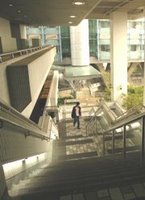 Marita and I are staying at Robert Black College, a residence for visiting scholars situated at Mid-Levels on the Hong Kong University campus. The campus fronts on Bonham Road but ends well up the hill at University Drive. Robert Black is on University Drive and to get to the main academic building one heads downhill through the entire campus which, 40 years after we left it, is jammed with buildings where beautiful lawns used to be. Going downhill to the campus from Robert Black is a breeze; it’s heading back up that’s literally a ‘drag’ - a climb ideally accomplished with the assistance of several sherpas and a mule or a mountain goat.
Marita and I are staying at Robert Black College, a residence for visiting scholars situated at Mid-Levels on the Hong Kong University campus. The campus fronts on Bonham Road but ends well up the hill at University Drive. Robert Black is on University Drive and to get to the main academic building one heads downhill through the entire campus which, 40 years after we left it, is jammed with buildings where beautiful lawns used to be. Going downhill to the campus from Robert Black is a breeze; it’s heading back up that’s literally a ‘drag’ - a climb ideally accomplished with the assistance of several sherpas and a mule or a mountain goat.
Forty years ago the climb was not so very different for us, because we lived at No. 3 University Drive. No. 3 no longer exists; it was demolished about ten years ago to make way for a sizeable Graduate Centre.
Hong Kong University Department of Music Debuts in the 1980s
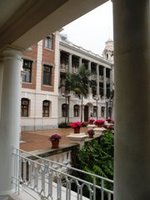 In 1966, HKU was a small, prestigious institution. I was there to lecture in Philosophy, but my first and last love was really music, and I gravitated towards it whenever I could. No Department of Music at HKU? No problem. I persuaded the Department of Extra-Mural Studies to let me give some courses in music. No professional orchestra? Again, no problem. I would form one. Before long I was spending many nights and weekends filling the air with music and talk about music; it was well into the 1980s, however, before the powers that be at HKU came to their senses and created the Department of Music which today is a vibrant part of university life.
In 1966, HKU was a small, prestigious institution. I was there to lecture in Philosophy, but my first and last love was really music, and I gravitated towards it whenever I could. No Department of Music at HKU? No problem. I persuaded the Department of Extra-Mural Studies to let me give some courses in music. No professional orchestra? Again, no problem. I would form one. Before long I was spending many nights and weekends filling the air with music and talk about music; it was well into the 1980s, however, before the powers that be at HKU came to their senses and created the Department of Music which today is a vibrant part of university life.
I am currently completing revisions to my Stokowski book and the new version will be published later this year. With Stokowski on my mind, I proposed to the music department at HKU a lecture called “Leopold Stokowski: the Limits of Interpretation.” They liked the idea and this past week I delivered the goods to a packed house – or should I say, a packed ‘room’, an assembled throng of 20, which was in fact as large a group as the room could accommodate.
The attendees included some formidable folk, one of whom was Mak Su-yin, who once worked for me at CJRT-FM in Toronto and is now in charge of academic studies in music at the Hong Kong Academy for the Performing Arts.
Another listener with a Toronto connection was Deborah Waugh, a percussionist who studied with members of Nexus and who is now a staff member in HKU’s Department of Music.
Chan Hing-yan is a composer and Associate Professor in the department. He recently completed a piece for harp and shared with me how much he had learned from Canadian composer Murray Schafer’s harp compositions. In his opinion, Schafer – with the help of Toronto Symphony harpist Judy Loman – has written some of the best harp music ever. I had no difficulty agreeing with him.
Another attendee was Ron Hill, a former staff member in the Geography department at HKU who, in retirement, appears be one of the busiest double bass players in Hong Kong. He delivered the sad news that one of our best friends in our Hong Kong years, Professor Robert Lord, had recently passed away. Robert’s academic fields were Russian literature and linguistics, but he was a skilled violist as well. We enjoyed making music together.
It is inevitable after all this time that inquiries about old friends frequently bring answers we don’t want to hear or believe. And so we also learned from Ron that another great soul is no longer with us: Mary Visick, an old China hand who did more than her share for the appreciation of literature in the Far East.
The Peak Tram and Lunch at The Lookout
Our second day in Hong Kong we took the famous Peak Tram to the top of the mountain with US attorney Yee Ling, a former student of Marita’s (Ying Wah Girls’ School), as our guide. In the days before air-conditioning “the Peak” was where the rich folk went to escape the summer heat. More recently locals and tourists alike have been making the trip to get a breathtaking view of Hong Kong beneath them and Kowloon and the New Territories in the distance across the harbor.
On this trip we were amazed to see that the size of the harbor has shrunk. So much land has been reclaimed for new buildings that there seems to be far less open water.
The Peak Tram has been around since 1888 and it is not really a tram at all. It is more correctly called a ‘cog railway’ or ‘funicular.’ The cars run on tracks at a very steep angle but they are being pulled up the hill on a cable. It sounds like a dubious activity but the fact is this railway has never had an accident.
This was not the best day for viewing the panorama. Visibility was about 100 feet when we ascended, but during lunch the heavens opened and it rained heavily for half an hour. Then all at once the clouds parted and we could suddenly see for miles. We seized the opportunity to take a lot of pictures and we had no sooner finished, than the clouds closed in again. Our timing had been perfect.
In 1966, the view from The Peak had been magnificent! Good thing too, because there wasn’t much else to see or do up there.
Today there is the Peak Tower - a combination shopping mall and viewing platform. There are now also at least half a dozen restaurants. On Yee Ling’s recommendation, we chose to dine at the oldest one – the charming Peak Lookout Restaurant - and found it to be excellent. We were delighted with the lamb curry and Tandoori chicken. If it hadn’t been raining, we might have done some serious walking after lunch; the government has created the Hong Kong Trail which meanders through 30 miles of country parks including the area around the Peak.
An Old Friend, a New Memoir, and Reflections on History
As a Canadian, I cannot think about Hong Kong and its history without paying tribute to the brave men who tried to defend it against the Japanese invasion in 1941. The small British garrison was quickly overrun, along with the contingent of Canadian soldiers sent in as reinforcements. It was disgraceful that the Canadian government allowed them to be sent to almost certain death. There were never enough soldiers to stop the Japanese but the politicians wanted to look as if they were doing something simply to cover their own backsides. Many Canadians were brutally killed during the attack and others were put in internment camps at Stanley or Sham Shui Po. For some of these soldiers death must have seemed far preferable to the three years of internment they endured. They were badly treated and many died of beatings or malnutrition.
Many local residents were interned with the defending forces, including the remarkable Solomon Bard. Solly was a medical doctor and a musician whom I was honored to know during my sojourn in Hong Kong. Now 93, he has a new memoir – Light and Shade - coming out this month. I will discuss it further in one of my future blogs.
37th Hong Kong Festival of the Arts
The Hong Kong Festival of the Arts is currently underway and in my next blog I will give a report on it. The Chicago Symphony under Haitink has already been here and in the final week French actress Juliette Binoche is appearing with British dancer Akram Khan in a unique show called In-I. In-I is primarily a dance event and Binoche deserves a lot of credit for attempting to go beyond her accustomed comfort zone as an actress. Also coming up are two concerts by the Deutsche Symphonie-Orchester Berlin conducted by Ingo Metzmacher.
Paul E. Robinson is the author of Herbert von Karajan: the Maestro as Superstar and Sir Georg Solti: his Life and Music, both available at http://www.amazon.com/.
 Classical Music Blogs
Classical Music Blogs 
Labels: classical music, Hong Kong, Leopold Stokowski, Paul E. Robinson
